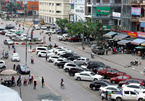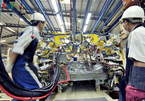
Carbon fiber is outdated
Carbon fiber is probably the easiest solution that allows you to increase the stiffness and strength of the car while reducing weight gain; however, it is no longer the only light and resistant material in circulation. Various manufacturers have experimented with Bcomp flax fibers, as recently seen on some Porsche racing cars and Polestar's Precept, with excellent results.Officially known as AmpliTex, it represents the future for light cars. Of course, it is still a long way from being used in traditional applications, however the move may now be near as Bcomp announced that it has received a round of investment from major companies including BMW, Porsche and Volvo. >
BMW has been relying on Bcomp's knowledge for some years now, using AmpliTex on numerous racing solutions such as the BMW M4 of the DTM championship, M4 of the GT championship and the Formula E single-seater. Porsche, for its part, has adopted AmpliTex on the Cayman GT4 CS MR and Mission R. Clearly motorsport is where the company is experiencing the most applications of its products, but as a more environmentally friendly alternative to carbon fiber, linen fiber composites of Bcomp could also arrive on road cars.
One of the biggest problems of electric vehicles is the weight and the adoption of a light material such as AmpliTex could lead to n many benefits, both in terms of performance and in terms of environmental impact. It remains to be understood how much this could affect the final cost of the car, but for this aspect it will be necessary to wait for mass production. The Swiss startup reports that it has received about $ 35 million from various companies; this money will be used to expand and begin commercializing new technologies.| ); }
Policy vision: outdated regulations hold back auto industry
Looking back at the history of the automobile industry in Vietnam, the biggest limitation is the vision and capacity of policy makers.

The Vietnam Association of Mechanical Enterprises (VAMI) has reported to the Prime Minister and relevant bodies problems related to regulations on methods to define the localization rate for domestically-manufactured cars. These have been applied for 20 years, causing losses to auto manufacturers.
Specifically, according to Decision 28 (issued in 2004), Decision 05 (2005) and Circular 05 (2012) of the Ministry of Science and Technology, Vietnam still calculates the localization rate based on clusters of components that are domestically made. Meanwhile, the features and components on cars are increasingly innovative and modern and account for a large proportion of the value of the car, especially for high-class cars, and electric vehicles using new materials such as carbon fiber, titanium, aluminum alloy, and composite.
The list of components specified in Decision 28 does not include safety technologies, intelligent control systems, multimedia entertainment systems, front/rear cameras, 360-degree cameras and in-car sensors. This causes damage to enterprises when calculating the localization rate.
Notably, Decision 28, Decision 05 and Circular 05 were issued based on the Prime Minister's Decision 175 dated in 2002 'on approving the Strategy for the development of Vietnam's automobile industry to 2010, with a vision to 2020” while it is the year 2022.
In fact, Decision 175 was replaced by Decision 1168 of the Prime Minister in 2014. According to the Law on Promulgation of Legal Documents, Decision 175 has expired but, after over seven years, the Ministry of Science and Technology has not yet issued a document repealing these regulations.
For the auto industry, policy formulation has long been a sad story. Regulations that are no longer consistent with international practices and the actual situation in production and business are still maintained, while policies on taxes and fees change from time to time, causing market turmoil.
In 10 years (2003-2013), the auto tax and fee policy changed dozens of times, even up to three times a year, making the market unstable, greatly affecting the plans and confidence of auto makers.
For example, the luxury tax based on the number of seats increased sharply from 5% to 24% for cars with 5 seats or less and up to 40% in 2005 then 50% in 2006. Since April 1, 2009, this tax is defined based on cylinder capacity.
With the old regulations, passenger cars with seven seats or less were subject to a special consumption tax rate of 30%. This tax rate was said to be relatively low compared to cars with 5 seats or less, so many customers chose 7-seat cars instead of 5-seat cars. As a result, Toyota Vietnam planned to promote localization of 7-seat Innova model. However, when this tax is calculated based on cylinder capacity, the tax rate on this model rocketed to 50%. Immediately, the output dropped from 14,000 cars/year to over 7,000 cars/year and the plan to promote localization for Innova failed.
But the most impressive record in policy change is the import tax on CBU cars, which changed four times within 15 months, from early 2007 to March 2008, causing a great turmoil to the auto market.
Policy constraints
Businesses are caught in a situation where they do not know what the policy will be tomorrow, so investment plans, both short and long term, are thrown into the trash.
The European Chamber of Commerce in Vietnam (EuroCham) then warned that continuous adjustment of taxes should be avoided as it could affect the stability of the auto industry. Frequent changes and will significantly disrupt production lines, supply chains and retail operations of those involved in the automotive industry.
When the policy changes and creates artificial demand points, it will negatively affect production. Sudden increase in demand for vehicles makes it impossible for manufacturers and suppliers of components to keep up with demand, and when demand is low, production is in excess. Both shortages and excesses destabilize production and discourage auto makers.
However, in late 2011, with the explanation of limiting the trade deficit, the ceiling of registration fee for cars with less than 10 seats increased from 15% to 20%. After that, Hanoi increased the fee from 12% to 20%, and Ho Chi Minh City from 10% to 15%. Hanoi’s Mayor at that time - Mr. Nguyen The Thao – explained that the increase was to help improve the city’s budget revenue and reduce traffic jams.
In fact, the outcome was different. In the first quarter since the registration fee was raised, tax revenue fell significantly because the number of car buyers dropped sharply. While sales of auto firms that are members of the Vietnam Automobile Manufacturers Association (VAMA) decreased by 40%. On April 1, 2013, the registration fee ceiling was reduced from 20% to 15%. Other localities slashed the rate to about 10%, and Hanoi and Ho Chi Minh City to about 12%
Auto makers said that the sudden change in legal regulations, which happen in a short time, and outdated policies that are maintained for a long time cause great risks for production and business. Both of these exist in the automotive industry.
Looking back at the development history of the automobile industry in Vietnam, it can be seen that the biggest limitation is in the vision and capacity of policy-making agencies. The development goals set for this industry in the past three decades have failed.
Tran Thuy
 People in poor provinces are buying more cars
People in poor provinces are buying more carsNghe An, Ha Tinh and Thanh Hoa were among the 10 provinces with the highest numbers of cars bought in 2021. They are among the 10 provinces with the highest number of poor households.
 Association: Regulations on localization ratios stifle VN automobile industry
Association: Regulations on localization ratios stifle VN automobile industryVietnam Association of Mechanical Industry (VAMI) believes the method of determining the localization ratio in cars is not consistent with the Law on Promulgation of Legal Documents and is no longer suitable to the new circumstances.
The Vietnamese auto market will be busier when several foreign automobile companies invest in Vietnam.